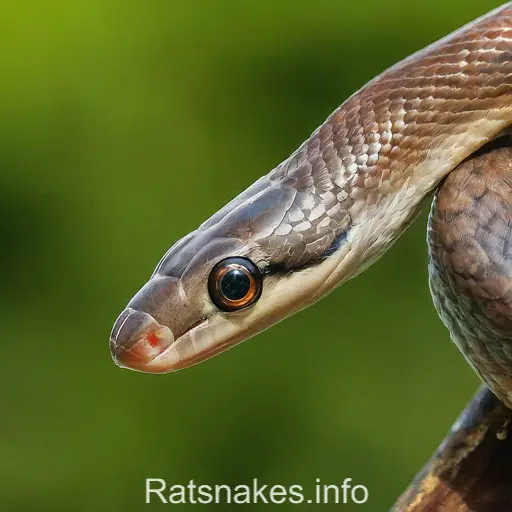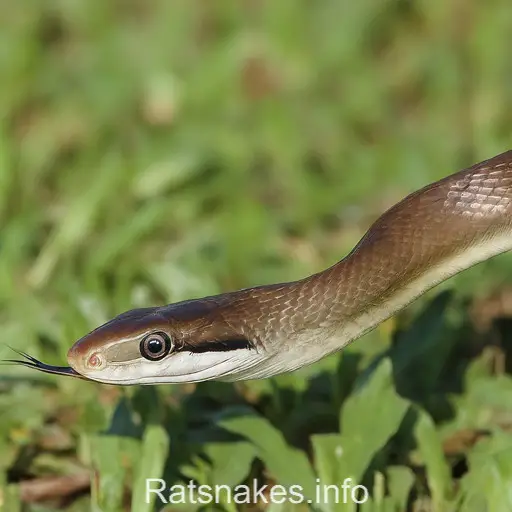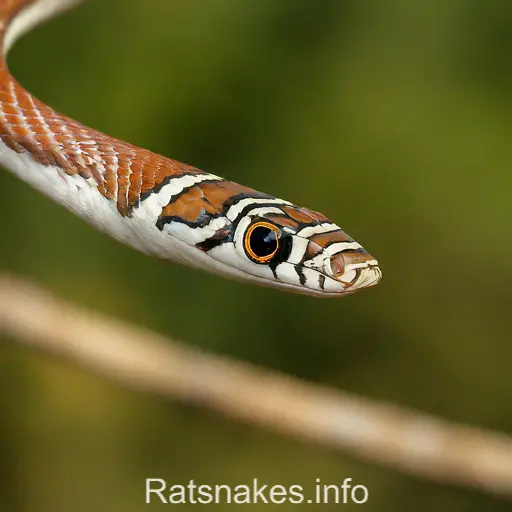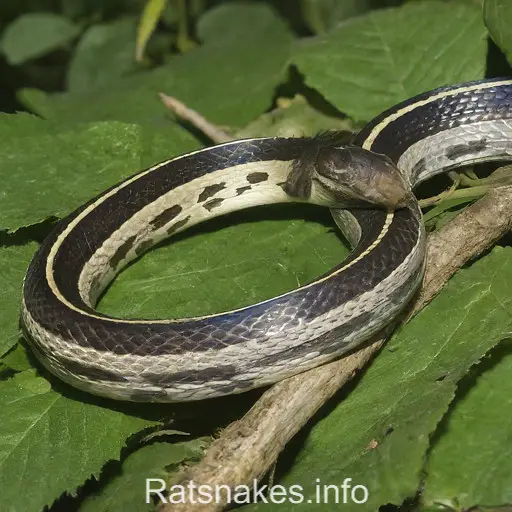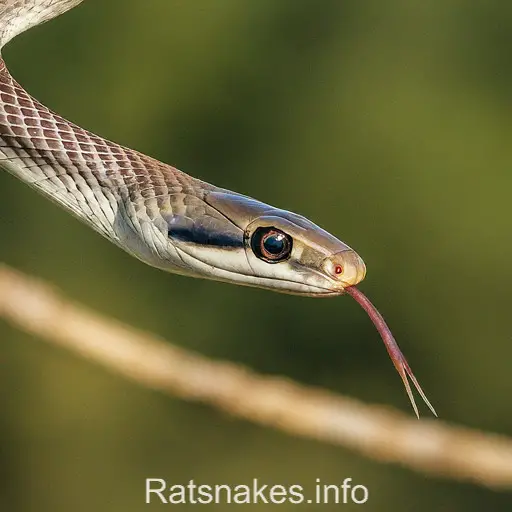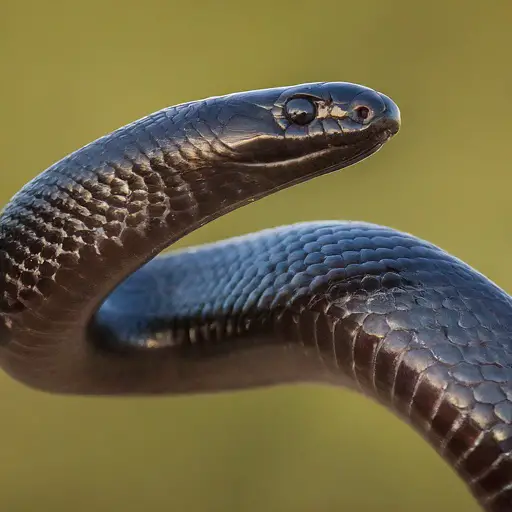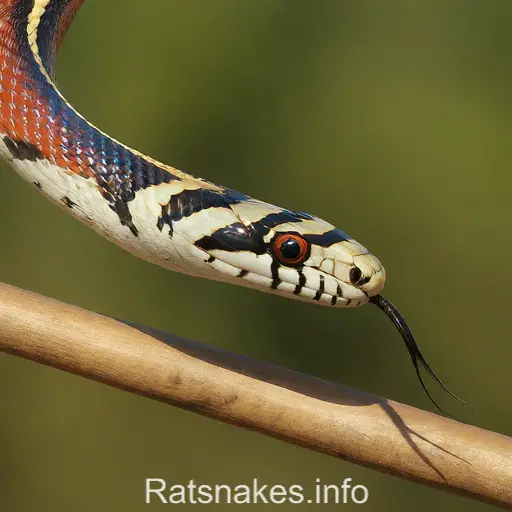
Welcome to our guide on Elaphe bimaculata, a fascinating snake species that captivates both enthusiasts and researchers alike. With its distinctive markings and intriguing behaviors, Elaphe bimaculata holds a special place in the world of herpetology.
Native to certain regions of Asia, Elaphe bimaculata, also known as the Korean rat snake, boasts a striking appearance that sets it apart from other snake species. From its sleek body to its intricate patterns, this snake is a sight to behold.
Join us as we delve into the world of Elaphe bimaculata, exploring its habitat, diet, and unique characteristics that make it a truly remarkable creature in the animal kingdom.
Taxonomy and Classification of Elaphe Bimaculata
Here, we delve into the taxonomy and classification of the fascinating Elaphe bimaculata:
- Family: Colubridae
- Genus: Elaphe
- Species: Elaphe bimaculata
Elaphe bimaculata is a member of the colubrid family, known for its slender bodies and predominantly non-venomous nature. Within the genus Elaphe, this species stands out for its unique characteristics and striking appearance.
In the classification system, Elaphe bimaculata holds a significant place due to its distinct features that set it apart from other snake species. The taxonomic hierarchy helps us understand the evolutionary relationships and biological traits specific to this remarkable snake.
We explore the taxonomy of Elaphe bimaculata to gain a deeper insight into its place in the natural world.
Habitat of Elaphe Bimaculata
Elaphe bimaculata, commonly known as the Korean rat snake, inhabits various regions with specific environmental conditions. Here’s an insight into the typical habitats where you can find this fascinating snake species:
- Forests: Elaphe bimaculata thrives in forested areas with ample coverage and suitable prey options.
- Mountains: These snakes are also found in mountainous regions, showcasing their adaptability to different terrains.
- Grasslands: Elaphe bimaculata can also be spotted in grassy habitats, where they can hunt and roam freely.
- Human Settlements: Interestingly, these snakes are known to occasionally venture into human settlements, seeking shelter or prey.
Understanding the diverse habitats of Elaphe bimaculata is essential for appreciating their role in various ecosystems and ensuring their conservation.
Diet and Feeding Behavior of Elaphe Bimaculata
When it comes to diet and feeding behavior, Elaphe bimaculata is an efficient predator with a diverse palate. Here are some key points about what this species typically consumes:
- Diet: These snakes predominantly feed on small mammals such as mice, rats, and voles. Additionally, they may also consume birds, bird eggs, and even insects when larger prey is scarce.
- Feeding Behavior: Elaphe bimaculata is a skilled hunter, using its agility and stealth to ambush prey. It constricts its prey to subdue it before consuming it whole.
- Feeding Frequency: The frequency of feeding for these snakes can vary based on factors such as prey availability and environmental conditions. Generally, they feed on a regular basis when prey is abundant.
- Impact on Ecosystem: As an important predator in its habitat, Elaphe bimaculata plays a crucial role in controlling rodent populations. By keeping these populations in check, they help maintain the balance of their ecosystem.
- Adaptations: Their specialized jaws and teeth are designed for swallowing prey whole, allowing them to consume animals much larger than their head.
Understanding the diet and feeding behavior of Elaphe bimaculata provides valuable insights into their ecological role and behavioral patterns.
Reproduction and Life Cycle of Elaphe Bimaculata
When it comes to reproduction, Elaphe bimaculata is known to mate in the spring, typically between April and June. Females lay a clutch of eggs, usually ranging from 4 to 12, in the early summer months. Incubation period for the eggs can last around 2 to 3 months, with hatchlings emerging in late summer or early fall.
The life cycle of Elaphe bimaculata begins as hatchlings, which are independent from birth and must fend for themselves. These young snakes grow rapidly, reaching sexual maturity at around 2 to 3 years old. They can live up to 15 to 20 years in the wild, depending on various factors such as environmental conditions and predation.
During their life cycle, Elaphe bimaculata goes through various stages of growth and development. Hatchlings start small, usually around 6 to 10 inches in length, and gradually grow to their adult size of 3 to 5 feet. As they mature, these snakes play a crucial role in the ecosystem by maintaining population balances of their prey species.
Understanding the reproduction and life cycle of Elaphe bimaculata provides valuable insights into the species’ behavior and ecological significance. By studying these aspects, we can enhance our appreciation for the intricate dynamics of this fascinating snake species.
Conservation Status and Threats to Elaphe Bimaculata
When it comes to the conservation status of Elaphe bimaculata, it is essential to recognize that their populations are facing various threats. One significant factor affecting these snakes is habitat loss due to human activities such as deforestation and urbanization.
Another pressing concern is the illegal pet trade, where these snakes are often captured and sold without consideration for their populations in the wild. This practice not only disrupts the natural balance of Elaphe bimaculata but can also lead to a decrease in their numbers over time.
Climate change is also a growing threat to these snakes, as it can alter their natural habitat and impact their reproductive patterns. Changes in temperature and precipitation can disrupt the timing of important life events such as mating, egg-laying, and hatching, ultimately affecting the overall population dynamics of Elaphe bimaculata.
In order to ensure the long-term survival of Elaphe bimaculata, it is crucial to address these threats through conservation efforts. By protecting their habitats, combating the illegal pet trade, and mitigating the effects of climate change, we can help preserve the ecological balance that these snakes contribute to in their ecosystems.
Key Takeaways
- Elaphe bimaculata, also known as the Korean rat snake, is a fascinating snake species native to certain regions of Asia with a striking appearance and unique behaviors.
- Understanding the taxonomy, habitat, diet, and reproductive behavior of Elaphe bimaculata is crucial for appreciating its ecological role and conservation needs.
- These snakes primarily feed on small mammals, birds, and insects, playing a vital role in controlling rodent populations in their ecosystems.
- Elaphe bimaculata faces threats such as habitat loss, illegal pet trade, and climate change, emphasizing the importance of conservation efforts to ensure their long-term survival.
Conclusion
Protecting Elaphe bimaculata is vital for maintaining biodiversity. Conservation efforts must prioritize habitat preservation, combatting the illegal pet trade, and mitigating the effects of climate change. By safeguarding their natural environment and addressing human-induced threats, we can ensure the survival of these snakes. Our collective actions play a crucial role in safeguarding Elaphe bimaculata and preserving their ecological balance within ecosystems. Let’s work together to secure a sustainable future for these fascinating creatures.

